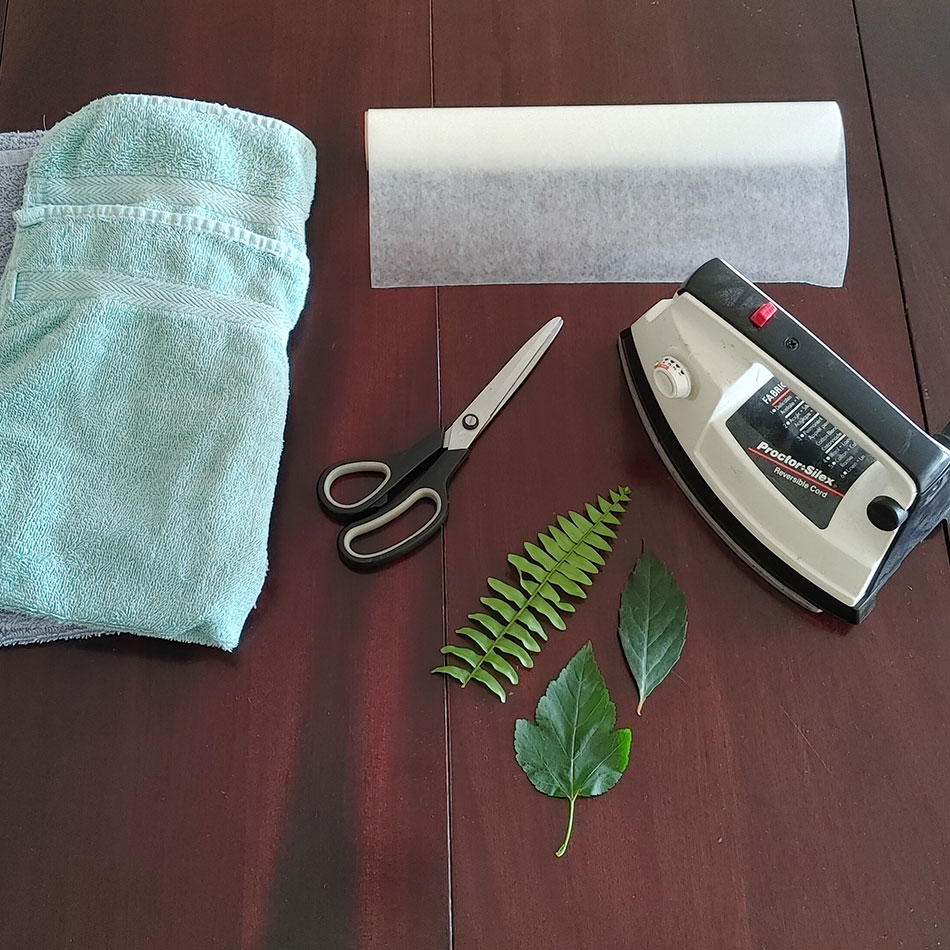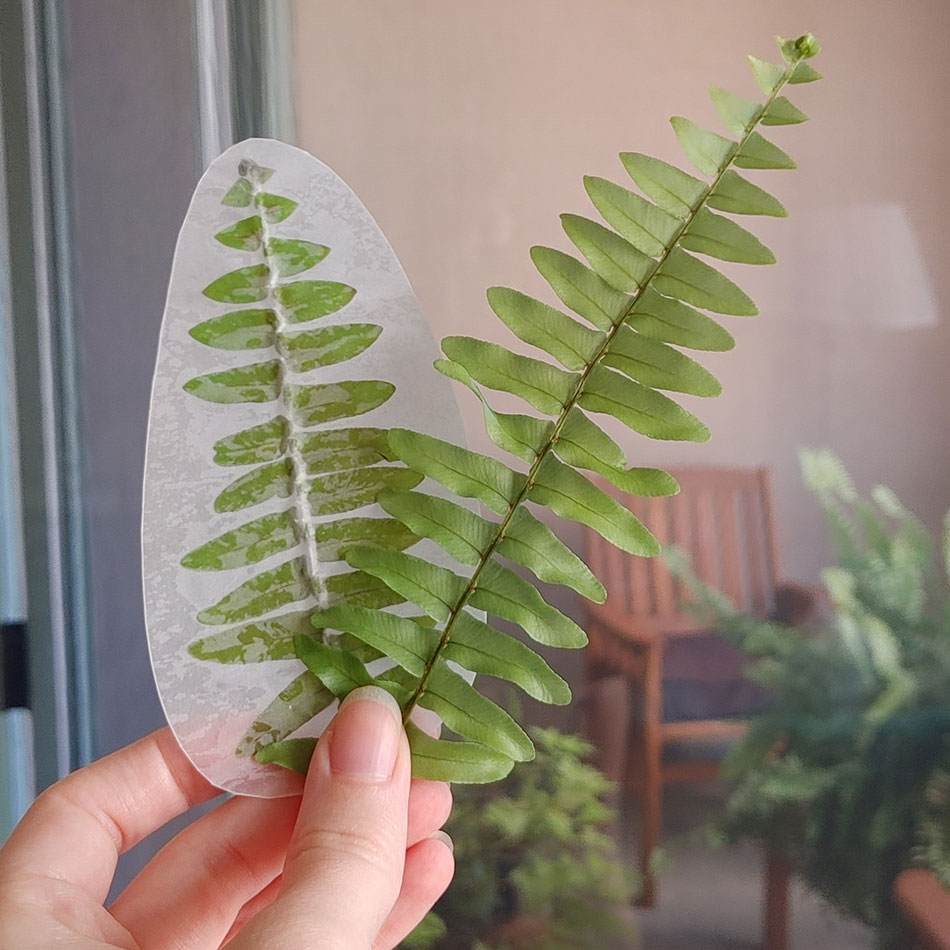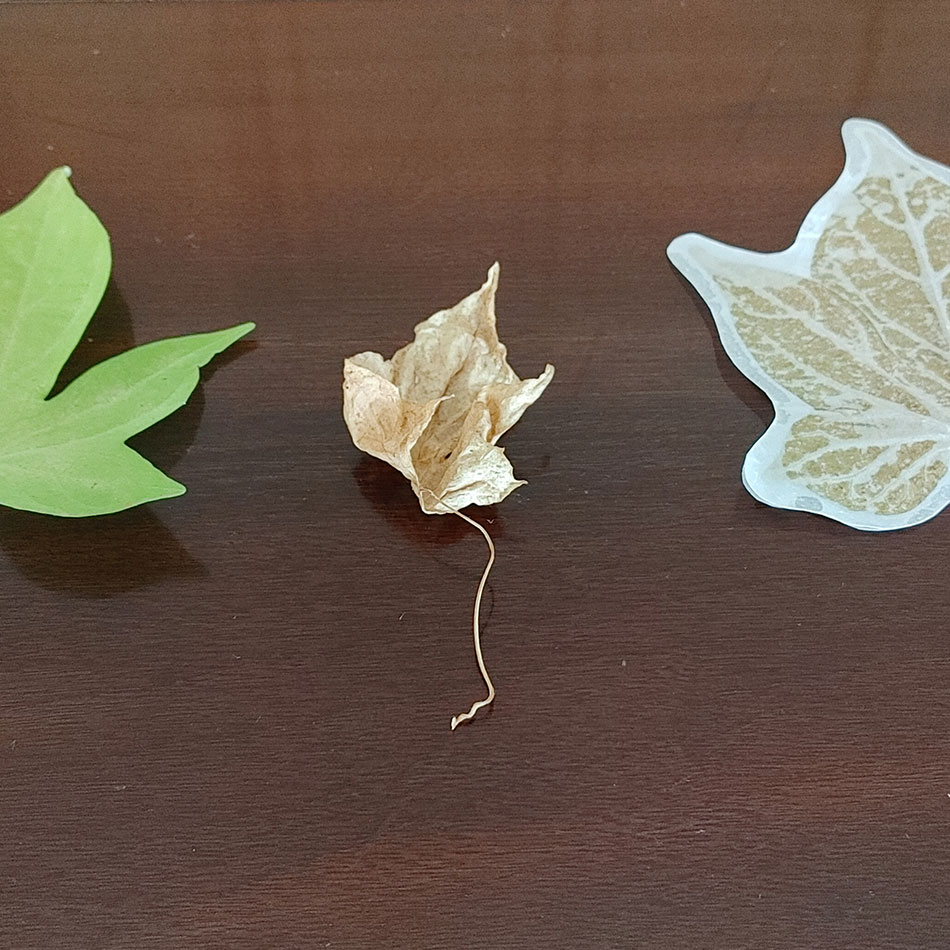Preserve Fallen Leaves
Study the science of changing leaf colours
- All
- Things to Make
- Get Outside
What you’ll need:
- An ironing board
- 2 tea towels or dishcloths
- Wax paper
- A variety of brightly coloured leaves
- An iron*
- Scissors (optional)
*Safety first! Always ask a grownup for help when handling a hot iron.

Activity setup:
- Place a tea towel on an ironing board.
- Place a piece of wax paper on top of the towel. It should be large enough to cover the entire surface of the towel.
- Arrange your leaves on the wax paper in a single layer with no overlapping. There should be lots of room around each leaf. For best results, use flat, dry leaves with no bumps or spots.
- Cover the leaves completely with another piece of wax paper.
- Place another tea towel on top of the wax paper.
- Ask a grownup for help with this step. Set your iron to a medium temperature. Once it has heated up, carefully run it over the top towel to seal the wax paper around the leaves.
- It may take some time for the heat to transfer through the towel to the wax paper. After about three minutes, check to make sure the paper has sealed around each leaf. Keep ironing as needed until the wax paper has sealed shut.
- Turn the iron off and let your leaves cool before handling them.

Try this!
There are lots of fun things you can do with your leaves after they have cooled! Keep your wax paper sheet intact and hang it in the window to create a colourful light catcher. Or, carefully cut each leaf out—be sure to leave a border so that the wax paper stays sealed on the leaf. Use these leaves as bookmarks or hang them for decoration.
Want to see what your leaf looks like under the wax? Cut out a leaf and peel off the paper to reveal a colourful, flexible waxed leaf.

How does it work?
Leaves absorb water from the trees they grow on through their stems. Once a leaf is no longer attached to a tree, it loses moisture, eventually becoming dry and brittle. When you melted wax onto your leaves, you created a protective hydrocarbon layer that will allow the leaves to retain their moisture, keeping them flexible and bright for longer.
Why do leaves change colours?
For most of the summer, leaves produce three types of compounds that play a part in photosynthesis. Each compound is responsible for a different pigment: chlorophylls are green, carotenoids are orange and yellow, and flavonoids are yellow.
During the spring and summer, the increase in sunlight leads to larger quantities of chlorophyll, resulting in green leaves. In the fall, as the sunlight decreases and the tree produces less chlorophyll, the colours from the other two compounds become more visible.
Bright red, purple and magenta-coloured leaves are the result of a different set of chemicals called anthocyanins, which only form under certain conditions in the fall. For anthocyanins to form, the leaves must contain a high concentration of sugar and be exposed to lots of sunlight. The combination of cool evenings with sunny days produces the brightest reds.
Did you know?
Some fruits, like apples and oranges, begin to rot as they lose moisture. Fruit growers sometimes add a thin coating of food-grade wax to preserve these fruits for longer.